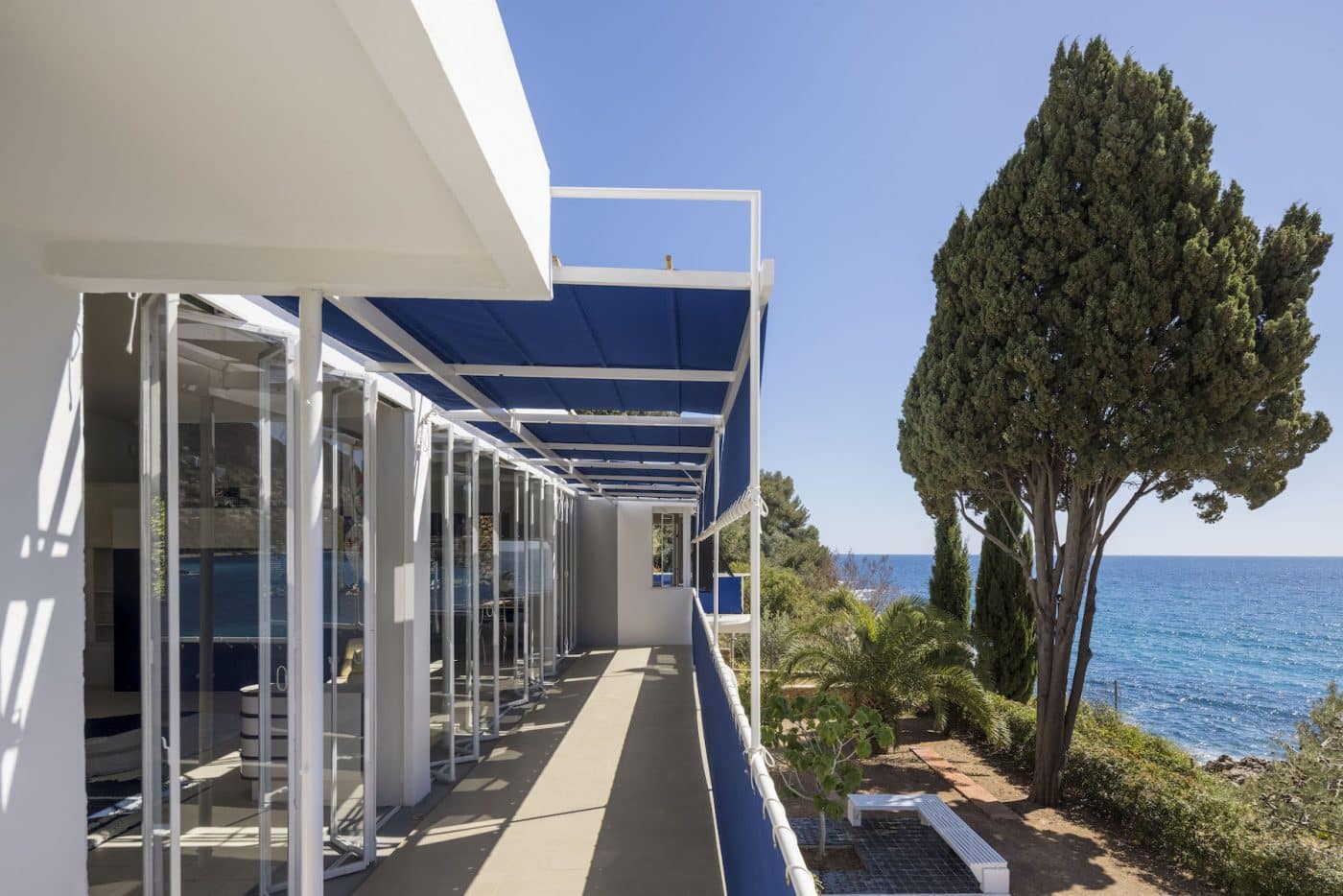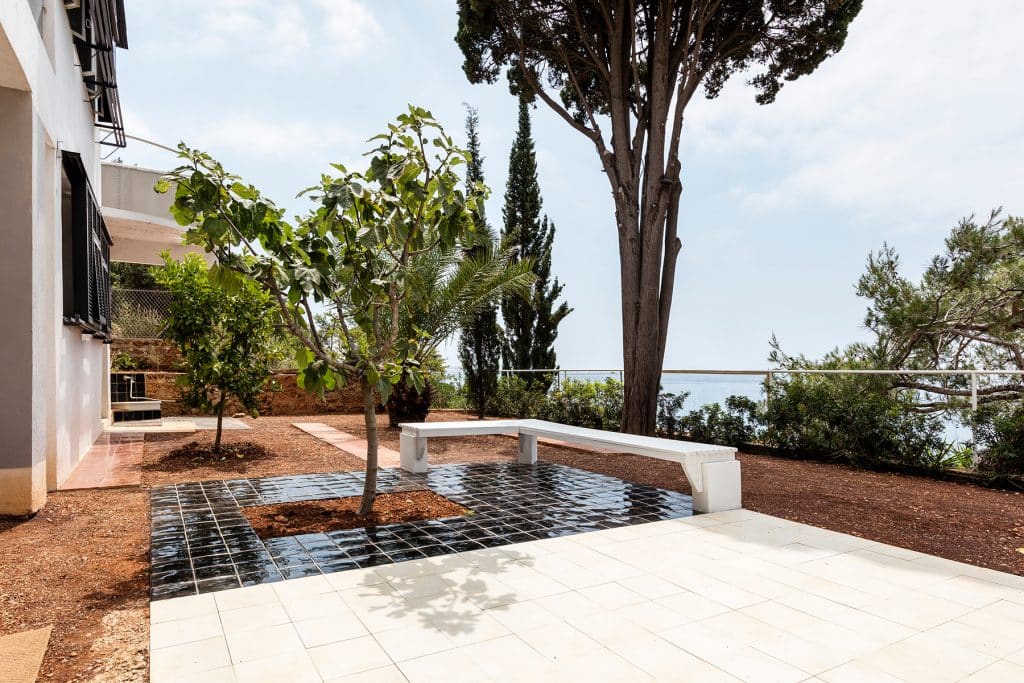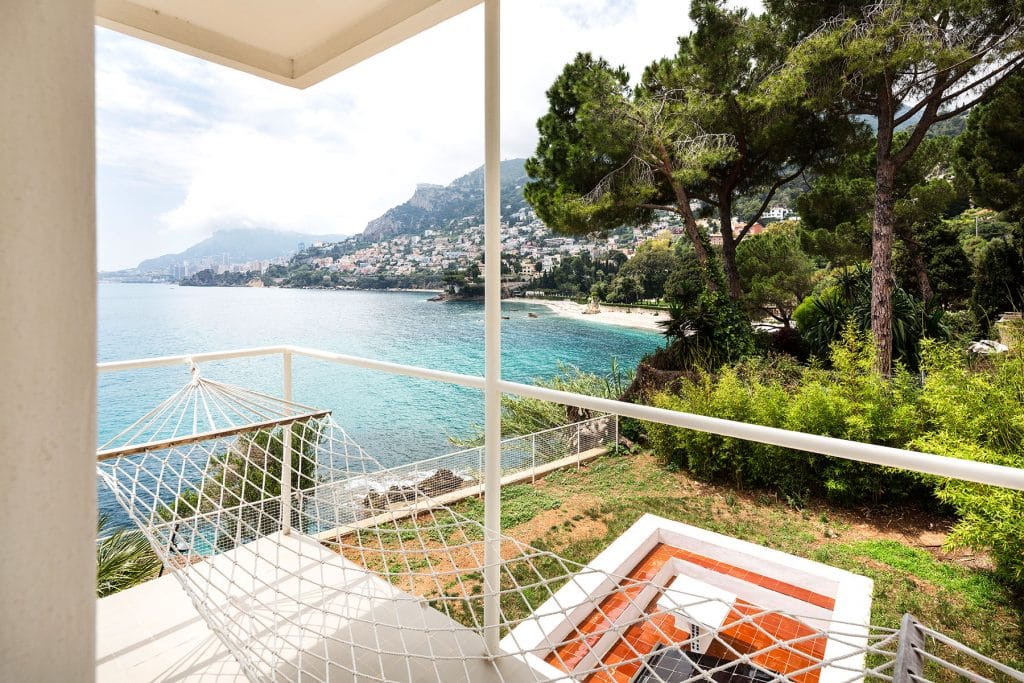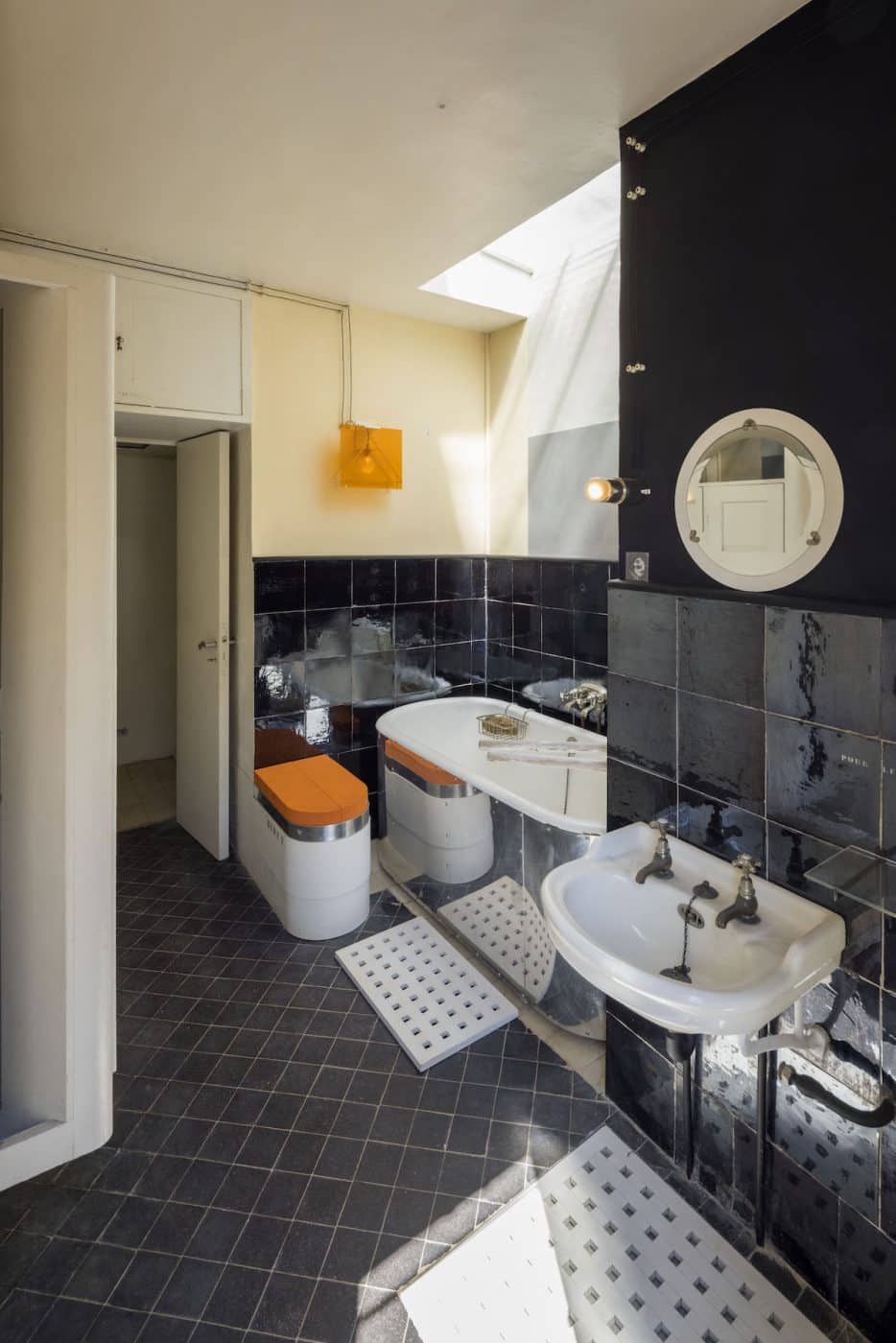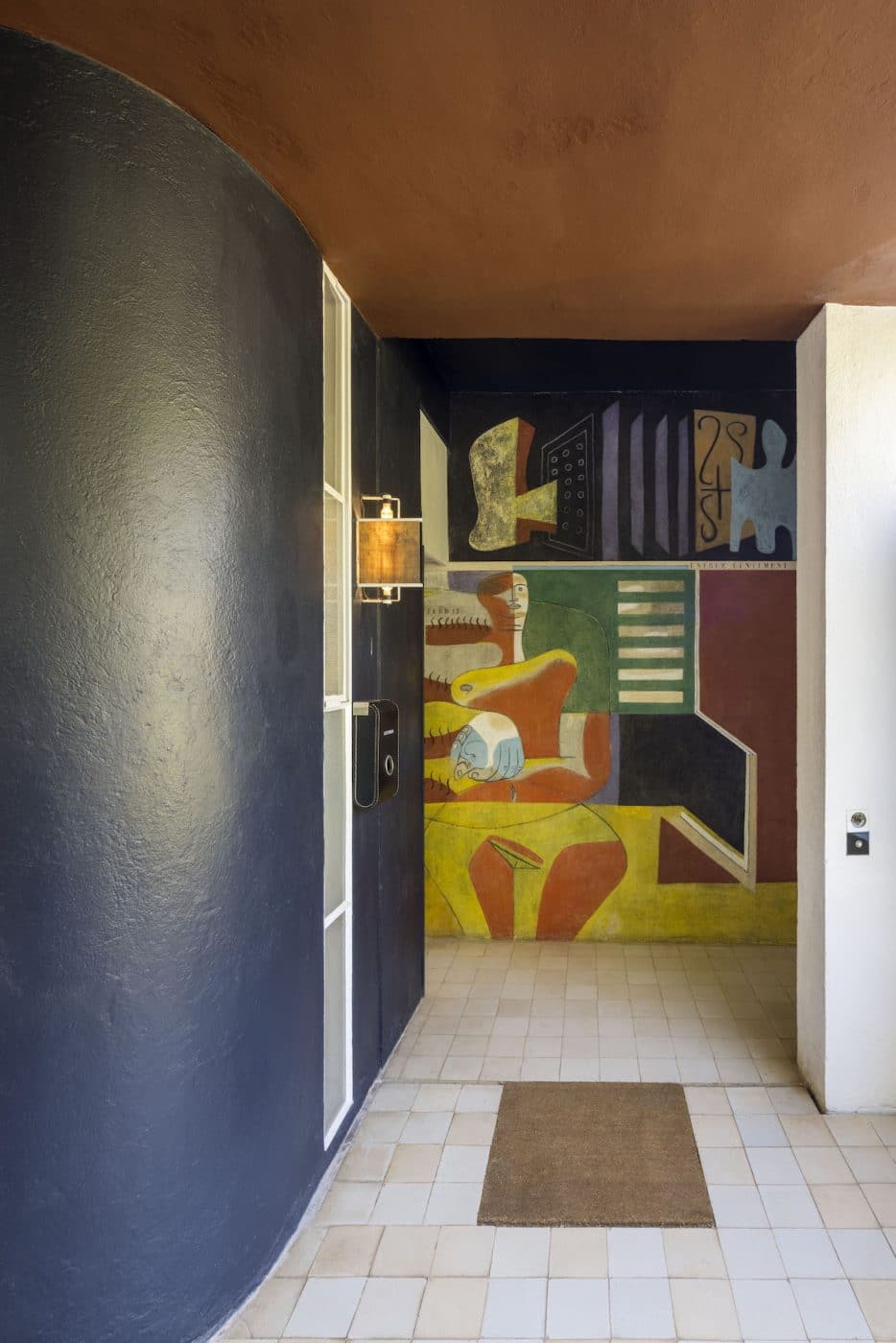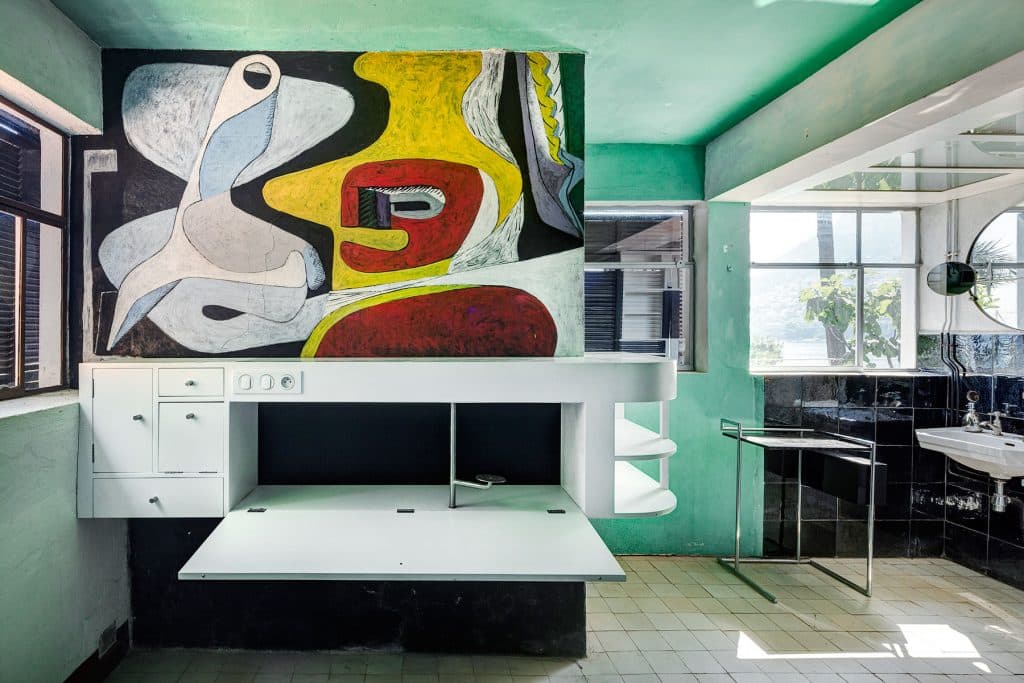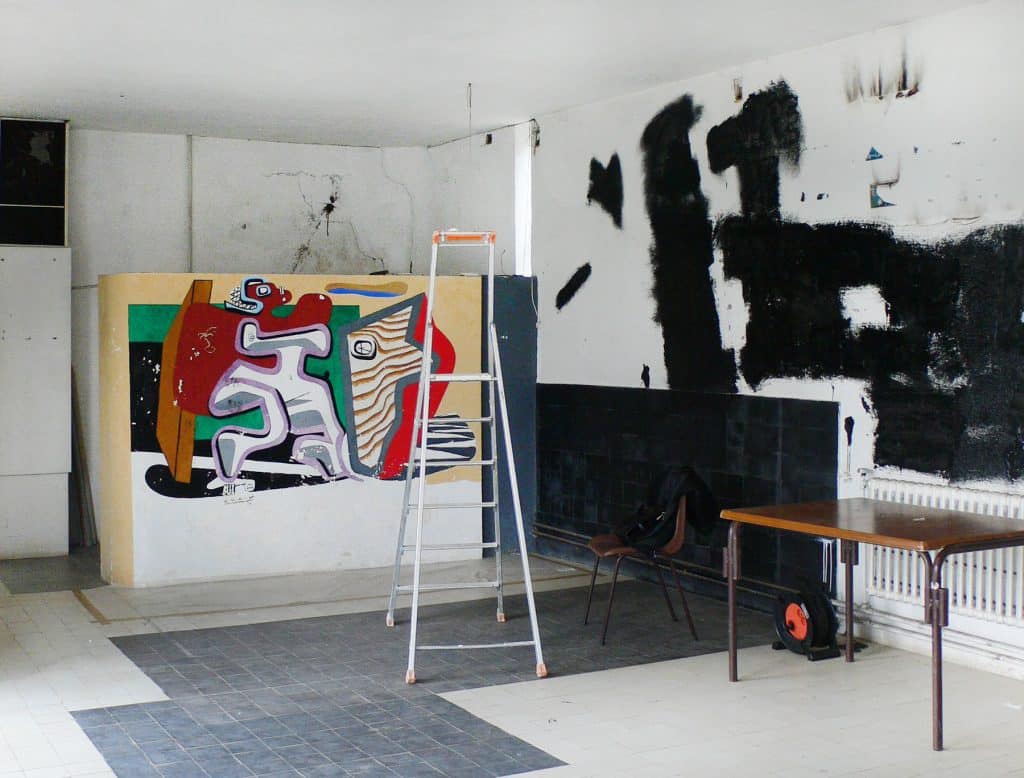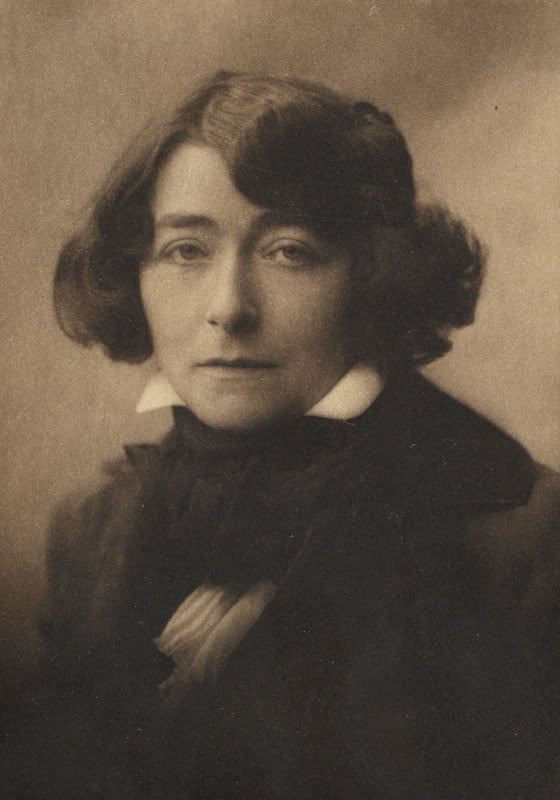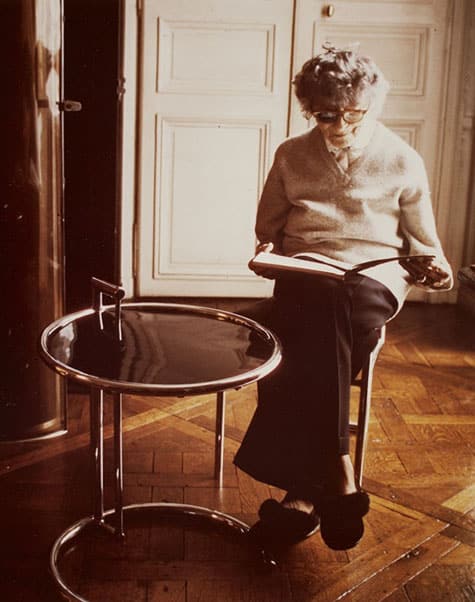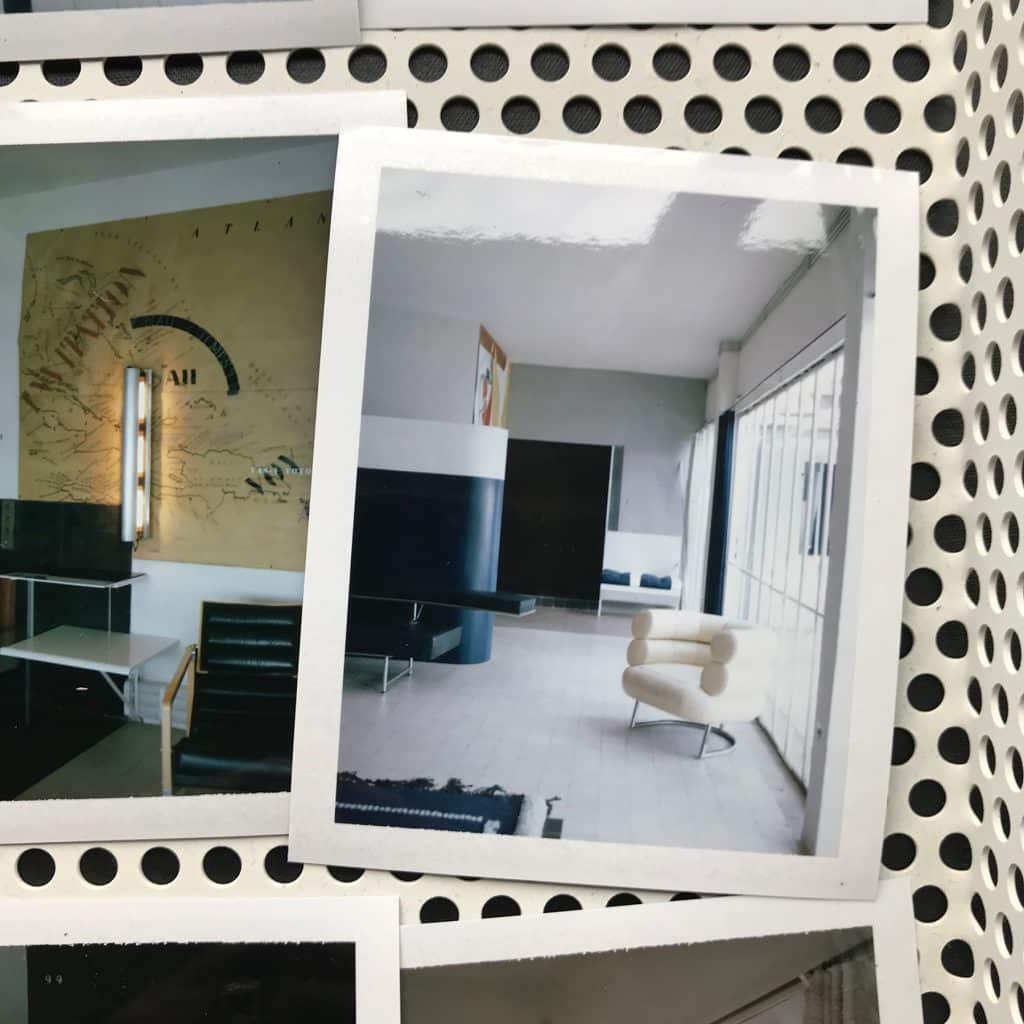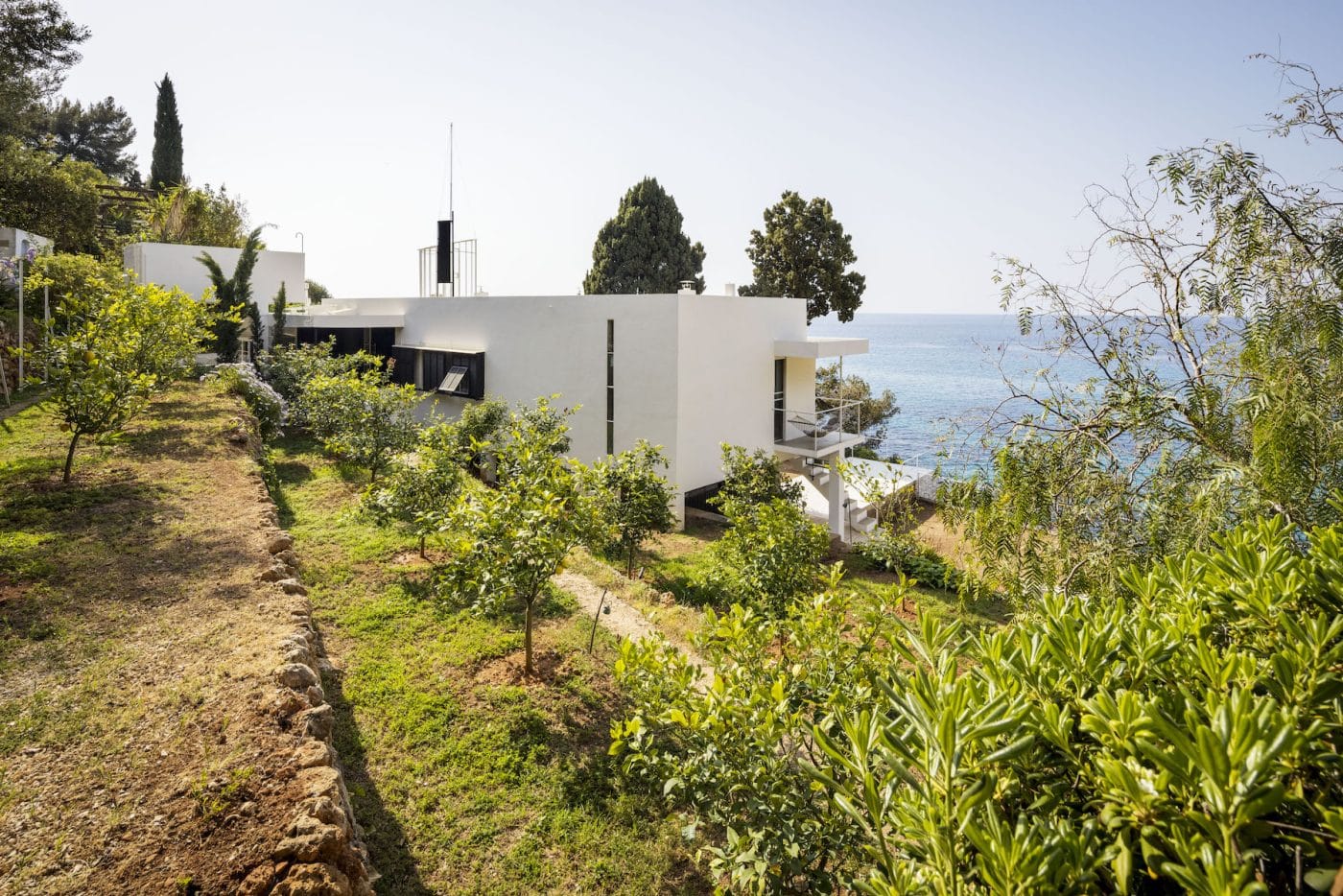
MAY 30, 2023A narrow pebbled lane leads from Roquebrune-Cap-Martin, on France’s Côte d’Azur, to E-1027, EILEEN GRAY’s now-world-famous first architectural work. On one side, the lane is hemmed in by the tracks of a little-used rail line; on the other there are fenced-off trees. Small gaps between their branches allow glimpses of the Mediterranean below.
I arrive, shoes dusty, at the metal gate to the property not knowing quite what to expect. Built between 1926 and 1929, E-1027 has been photographed abundantly, but buildings, like people, often look markedly different in person — and so it is here.
As soon as I walk down a few steps, a great adventure begins to unfold. The house, which seems to grow out of the rocks, reveals itself from the roof down. A circular glass “cabin” pokes up from an otherwise flat surface giving access to the roof from the tight spiral staircase that runs to the bottom of the house. This proves to be the first of the terraces that grace every level. The lowest one contains a sunken pool. Kept dry, it was intended not for splashing but for bathing in the sun’s rays.
The terraces and the house’s horizontal windows allow for a constant interplay between nature and the interior. I soon discover that these match each other in splendor. Even today, when superyachts are anchored in the blue and green water of the bay and Monte Carlo’s high-rises form a distant backdrop to the west, the setting remains idyllic.
I was attracted to Eileen Gray’s interior designs and curious about her rather mysterious life (she burned all her papers before her death), but I’d been unconvinced by MODERNIST architecture in general, finding it cold, even barren, with all that geometry and ideology. Within minutes of arriving, however, my conversion began. Here, modernism is transformed by her LYRICISM, WIT, ELEGANCE AND WARMTH. As her biographer and friend Peter Adam wrote in his 2009 biography, Eileen Gray: Her Life and Works, she “felt deeply the spirit of things and objects, reflecting and perfecting them until a chair or a table became the friend of man.”
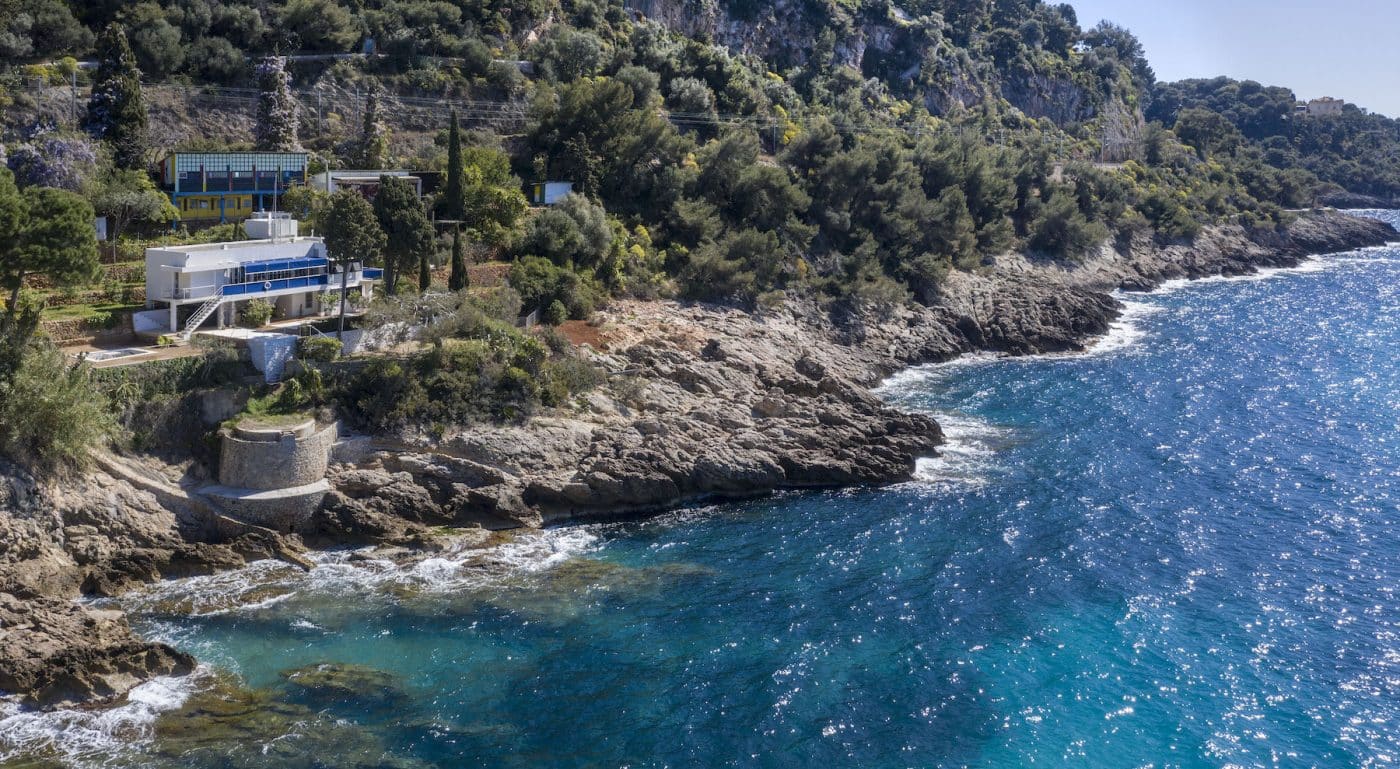
Eileen Gray (1878–1976) had a privileged background. She grew up in Ireland and London, where she attended art school. Early in the 20th century, she visited Paris, and from 1907 on, it was her base.
Gray and ART DECO were made for each other, and three-dimensional decorative art became her métier. She mastered the DEMANDING TECHNIQUES of JAPANESE LACQUER, and soon her SCREENS and furniture were sought after by those with the taste to appreciate them and money enough to afford them. Hand-knotted rugs and furniture, from SOFAS and END TABLES to LAMPS, followed. In 1921, Gray opened a gallery to showcase her creations. She called it Jean Désert, believing that people would take her work more seriously if a man’s name was attached to it.

The next two decades brought AN OUTPOURING OF CREATIVITY, as she glided from Deco to modernism, blazing a trail in parallel with MARCEL BREUER. Among her many emblematic pieces are two chairs very different in appearance but equal in their desirability: the sleek TRANSAT and the curvaceous BIBENDUM, both from the mid-1920s.
After World War II, fashion and clients moved elsewhere, but Gray was fortunate to live long enough to enjoy a revival. In the 1970s, exhibitions devoted to her work were mounted in Vienna, London and Boston, and design historians and avid collectors began making pilgrimages to her Paris apartment.
Renewed interest flushed out hidden treasures, and the market for her work began to build. She died before the historic 2009 YVES ST. LAURENT/Pierre Bergé auction in Paris, in which her Dragons armchair from 1917–19 fetched a stupendous $26 million (still a record price for a piece of 20th-century decorative art), and the long-overdue career retrospective at the POMPIDOU CENTER, in 2013. Now, another boost to the WIDESPREAD APPRECIATION OF HER ACHIEVEMENTS: the restoration of E-1027.
The house is both sophisticated and cozy. Even its name, which I assumed was some sort of Euclidean code, proved to be a key that unlocks the love story between Gray and her much younger lover, architect and critic Jean Badovici, with whom she shared the home. (The letter E stands for Eileen; 10 for J, the 10th letter of the alphabet; 2 equals B, the second; and 7 equals G for Gray. Thus the name of the house represents Gray’s embrace of Badovici.)
By 1931, the affair over, she gave him the house and left. His great friend LE CORBUSIER became a frequent visitor and put his stamp on it — inside and out. E-1027 was soon plastered with his vividly colored murals. Then, in the 1950s, he built tiny, dark le Cabanon, a getaway for himself and his wife, adjacent to Eileen Gray’s masterpiece, and, literally just above it, a scheme of tiny hostels decorated outside in bright primary colors. Visitors to Cap Moderne can decide for themselves whether Gray inspired Corb to create these buildings or whether his actions were motivated by competitive aggression. If the latter, he did not obliterate the magnificence of what Gray achieved.
Her relationship with Badovici may have been tangled, even painful, but the house proclaims that it was no less passionate for that. Stand in the main bedroom, where everything seems sensuous, from the fur throw on the large bed to the way the mosquito netting is gathered at its head; walk into the large, open-plan living area, with its curved seating, round tubular glass-topped table and thick, soft CENTIMETRE RUG; visit the bathroom, with its large, now-iconic SATELLITE MIRROR, which allowed Badovici to shave the back of his neck as well as his cheeks. E-1027 was conceived as a love nest: imaginative, tender, amusing, incandescent.

Thanks to the restoration performed by the not-for-profit CAP MODERNE ASSOCIATION, the nearly century-old house seems as fresh, radiant and of the moment as it must have appeared when Gray moved in. Much of the credit belongs to the chair of the project, Michael Likierman, an energetic and visionary English entrepreneur.
Likierman arrived in Paris in 1972 to launch TERENCE CONRAN’s Habitat store, and France has been his home ever since. In 1980, he cofounded a hugely successful international eyewear chain called Grand Optical, which he sold in 2006. By then, he and his late wife, Margaret, had moved to Menton, where they overhauled Les Colombières, a derelict though once grand house, and its gardens. Likierman was ready for a new project when he was approached to oversee the restoration of E-1027, just up the road.
In 2014, he took on the job. By mid-2022, restoration was essentially complete. The fabric of the house is now sound, and all of its original interior has been faithfully re-created. Likierman is proud and pleased that “everything seen in photographs taken in 1929 looks now as it did then.”
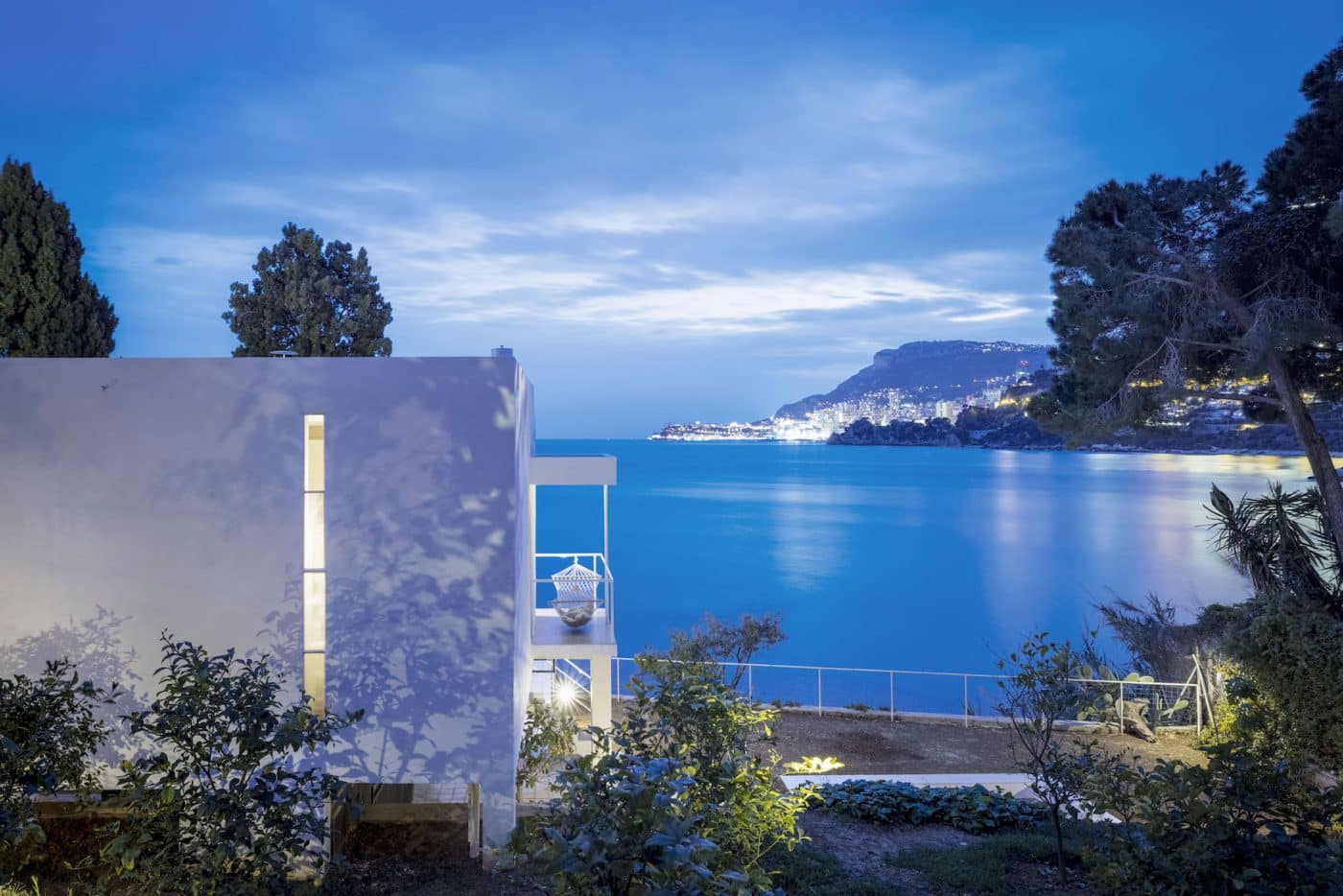
There is also a large visitors center and exhibition space in what was a former warehouse in the old-fashioned railway station, a short stroll from E-1027. The site is open to visitors from April through October, with tickets limited to four tour groups per day: two in English and two in French, each with a maximum of 15 members. Nearly 40,000 people have been so far. The tour covers the entire restoration project, including l’Étoile de Mer (a small bar next door to E-1027) and Le Corbusier’s Cabanon.
“A high note on which to retire?” I ask Likierman, now in his 80s.
Certainly not. “Are you aware that nearby Menton has fifteen exceptional private and public gardens, a number of them badly neglected?” he asks. “Yes and no, in that order,” I reply. And so I learn that Likierman has a new team already in place for the “worldwide campaign” he will launch next year. The gardens will be restored. The goal: a rare and splendid horticultural network, the Riviera Botanica.
E-1027’s full restoration has cost six million euros. Half the money came from the French state, to which it now belongs; half was the result of Likierman-led fundraising. He is still at it, telling me that donations are welcome to provide the final few touches before France’s Centre des monuments nationaux takes on full responsibility for maintaining as well as running the site at the end of 2023.
Making a donation to help save this monument to one of the 20th century’s GREAT DESIGN TALENTS is, of course, its own reward. But sitting there, looking out at the light dancing across sea and sky, with only rocks between you and the bay and with Gray’s wonderful house as shelter, is a pleasure that you’ll not soon forget.
This story has been updated since its original publication, in January 2019.



